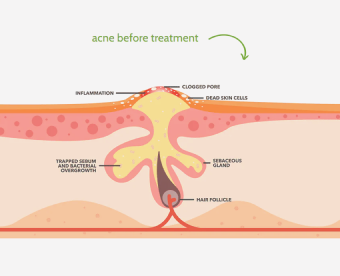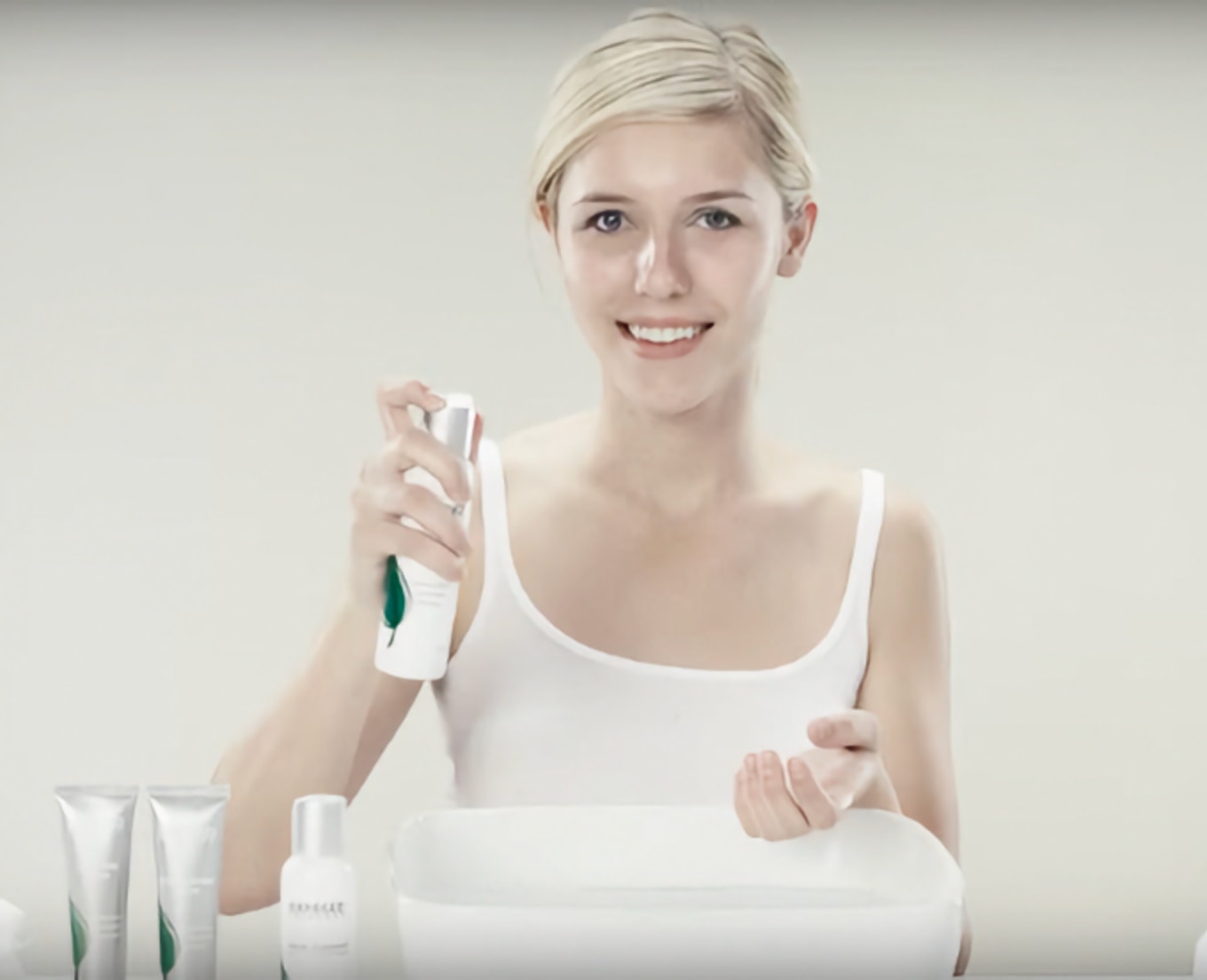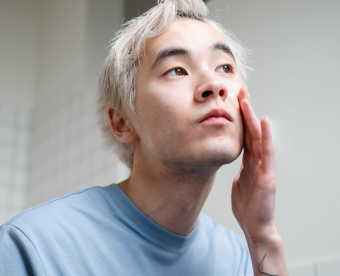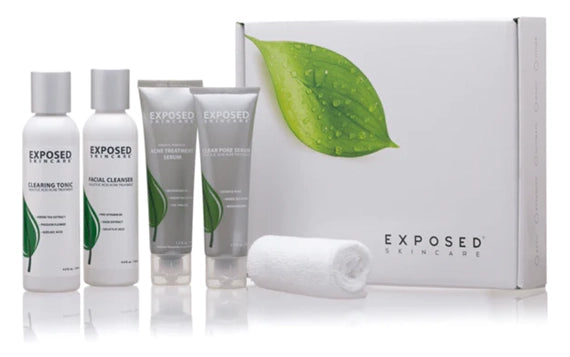Acne is a common skin condition affecting millions of people worldwide, and finding a solution that works can be daunting. In your quest for clear skin, you may have come across the question, "Does tretinoin help with acne?"
This blog post will delve into tretinoin, a powerful skincare ingredient proven to help combat acne. We'll explore how it works, and its benefits and answer some frequently asked questions to understand this acne-fighting powerhouse comprehensively.
Also read: How to choose the best acne treatment
Biggest Take-Aways:
-
Tretinoin effectively treats acne by increasing skin cell turnover, unclogging pores, and reducing inflammation.
-
Tretinoin-induced purging is a temporary phase that can be managed with consistent treatment, proper skincare, and patience.
-
Comparing tretinoin to other retinoids, such as adapalene and retinol, can help individuals choose the best acne treatment based on their skin type and concerns.
-
Exposed Skin Care offers a comprehensive solution for acne management, targeting various skin conditions and providing quick results with minimal side effects.
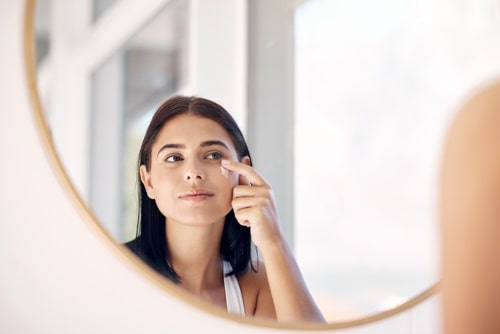
What is Tretinoin, and How Does It Work?
Understanding Tretinoin
Tretinoin, or retinoic acid, is a vitamin A derivative widely used in skincare products. It is a prescription-strength topical medication that is primarily used for treating acne, but it also has a multitude of other benefits, such as reducing the appearance of fine lines and wrinkles and improving skin texture.
The Acne-Fighting Mechanism
Tretinoin is known for its ability to help with acne by targeting the condition's root causes. Here's how it works:
-
Exfoliation: Tretinoin accelerates the skin's natural exfoliation process, helping to shed dead skin cells and unclog pores, which can prevent the formation of acne lesions.
-
Reducing inflammation: Inflammation plays a significant role in the development of acne. Tretinoin helps to soothe inflammation, reducing the redness and swelling associated with acne breakouts.
-
Regulating sebum production: Excessive sebum (oil) production can contribute to the development of acne. Tretinoin normalizes sebum production, helping keep pores clear and reducing the risk of acne formation.
Benefits of Tretinoin for Acne-Prone Skin
Does tretinoin help with acne? The answer is a resounding yes, but it also offers several other benefits for your skin. Here are some of the top advantages of incorporating tretinoin into your skincare routine:
Effective Acne Treatment
As mentioned earlier, tretinoin effectively targets the root causes of acne, making it a potent solution for treating existing breakouts and preventing new ones from forming.
Improved Skin Texture
By promoting cell turnover and exfoliation, tretinoin can help to smooth and even out your skin's texture, giving you a more youthful and radiant appearance.
Reduced Hyperpigmentation
Hyperpigmentation, or dark spots, can be a lingering side effect of acne breakouts. Tretinoin can help to fade these marks over time, promoting a more even skin tone.

Anti-Aging Benefits
In addition to its acne-fighting properties, tretinoin is known for its ability to minimize the appearance of fine lines and wrinkles. By promoting collagen production and cellular turnover, tretinoin can help to maintain a youthful and vibrant complexion.
Tretinoin vs. Other Retinoids: What's the Difference?
When it comes to topical skin treatments, retinoids have become a popular choice for combating acne and other skin issues. Tretinoin, a potent retinoid, has already been discussed as an effective solution for acne.
However, other retinoids are on the market, and understanding their differences can help you make informed decisions about your skincare routine. This section will compare tretinoin to other retinoids and discuss their unique properties.
Tretinoin
As previously mentioned, tretinoin is a prescription-strength retinoid derived from vitamin A. It promotes the turnover of new skin cells, unclogging pores, and reducing inflammation. Tretinoin is available in various formulations, such as creams and tretinoin gel, and is primarily used to treat acne.
While it's highly effective, it can cause skin irritation and dryness, particularly in the initial stages of treatment. Rarely, some individuals may experience an allergic reaction to tretinoin, making it important to monitor your skin's response when starting treatment.
Adapalene
Adapalene is another topical retinoid often used to treat acne. It is available both as a prescription and over-the-counter (OTC) in lower concentrations. Like tretinoin, adapalene works by increasing cell turnover and reducing inflammation.
However, adapalene is generally less potent than tretinoin and may cause less skin irritation. This makes it popular for individuals with sensitive skin or those looking for a milder alternative to other topical skin treatments.
Retinol
Retinol is an OTC retinoid commonly found in various skincare products, such as serums, creams, and lotions. While it shares many of the same benefits as other topical acne medications, retinol is a weaker vitamin A derivative than tretinoin and adapalene.
As a result, it may take longer to see significant improvements in facial acne lesions. However, retinol is generally better tolerated and causes less irritation, making it a popular choice for individuals with sensitive skin or those new to retinoids.
Choosing the Right Retinoid for Your Needs
When deciding between tretinoin and other topical retinoids, consider the severity of your acne, your skin's sensitivity, and your preferences.
If you have moderate to severe acne, tretinoin may be the most effective choice. However, adapalene or retinol may be more suitable if you have sensitive skin or prefer a gentler option.

It's essential to remember that results may vary, and what works for one person may not work for another. Be patient, and don't hesitate to experiment with different retinoids to find the best solution for your skin.
Tips for Using Tretinoin Effectively
Now that we've answered the question, "Does tretinoin help with acne?", let's discuss some tips for using this powerful ingredient effectively:
-
Start slow: Gradually introduce tretinoin into your skincare routine, beginning with a lower concentration and applying it every other night to minimize irritation.
-
Use a pea-sized amount: A little goes a long way with tretinoin. Using a small, pea-sized amount should be sufficient for your entire face. Overusing the product can lead to irritation and dryness.
-
Apply to clean, dry skin: To ensure optimal absorption, apply tretinoin on clean and dry skin. Wait about 20-30 minutes after cleansing before applying the medication to minimize potential irritation.
-
Moisturize: Tretinoin can be drying, so using a gentle, non-comedogenic moisturizer is essential to keep your skin hydrated and healthy.
-
Be patient: Tretinoin may take several weeks or even months to improve your acne significantly. Stick with it, and remember that consistency is key when it comes to seeing results.
- Protect your skin from the sun: Tretinoin can make your skin more sensitive to the sun, increasing the risk of sunburn. Wear a broad-spectrum sunscreen with an SPF of at least 30 during the day to protect your skin from harmful UV rays.

How to Address Tretinoin-Induced Purging
Tretinoin-induced purging is a common concern for individuals who have recently started using tretinoin for acne treatment. The purging process, characterized by a temporary increase in breakouts, can dishearten those seeking clearer skin.
However, understanding the purging phase and knowing how to manage it can make a significant difference in achieving long-term success with tretinoin. This section will discuss how to address the effects of tretinoin-induced purging and maintain healthy skin.
Understanding Tretinoin-Induced Purging
When you first start using tretinoin, your skin may experience unusual dryness, skin peeling, and increased breakouts. This is because tretinoin accelerates the cell turnover process, bringing pre-existing acne lesions to the surface more quickly. This purging phase typically lasts between 4-6 weeks as your skin adjusts to the new treatment.
Managing Tretinoin-Induced Purging
While purging can be frustrating, there are several ways to manage the process and minimize its impact on your skin:
-
Stay consistent with your acne treatments: Continue using tretinoin as directed, even during the purging phase. Stopping and restarting the treatment may prolong the purging process and delay your desired results.
-
Avoid over-exfoliation: Avoid using harsh scrubs or additional exfoliating products during the purging phase, as they may further irritate your skin and exacerbate breakouts.
-
Monitor for allergic reactions and drug interactions: While rare, some individuals may experience allergic reactions to tretinoin. If you suspect an allergic reaction or are concerned about potential drug interactions with other acne treatments, consult your healthcare professional for guidance.
-
Be patient and stay positive: Purging is a temporary phase most individuals experience when starting tretinoin treatment. Remember that the long-term benefits of tretinoin, such as clearer skin and reduced skin discoloration, will become apparent once your skin has adjusted to the medication.
- Moisturize and soothe your skin: Tretinoin can cause skin dryness and peeling. To minimize these side effects, use a gentle, non-comedogenic moisturizer and consider incorporating products with anti-inflammatory properties, such as niacinamide or green tea extract, into your skincare routine.

Tretinoin-induced purging is a common and temporary phase many individuals experience when starting tretinoin for acne treatment.
By understanding the purging process and following the tips in this section, you can effectively manage the purging phase and achieve clearer, healthier skin with tretinoin.
Remember to stay consistent with your treatment, moisturize and soothe your skin, avoid over-exfoliation, monitor treated skin for allergic reactions, and remain patient as your skin adjusts to the new treatment.
Discover the Benefits of Exposed Skin Care for Acne Management
Exposed Skin Care is a well-regarded skincare system designed to address acne vulgaris and help individuals effectively manage their breakouts. The line boasts a range of products that work synergistically to treat acne and other skin imperfections.
Here are some of the top benefits of using Exposed Skin Care to combat acne:
-
Combats various skin conditions: Exposed Skin Care addresses various skin problems, including moderate acne, blackheads, whiteheads, and inflammation.
-
Quick results: Many users consistently report noticeable skin improvements within the first few weeks of using Exposed Skin Care products.
-
Easy application: Applying a thin layer of the product as directed can help you achieve optimal results without overburdening your skin.
-
Minimal side effects: Unlike some oral or retinoid medications, Exposed Skin Care products tend to have fewer side effects, making them suitable for a broader range of users.
In summary, Exposed Skin Care offers a comprehensive solution for individuals with acne and other skin imperfections. Incorporating this skincare system into your daily routine allows you to experience clearer, healthier skin and effectively manage acne breakouts.
Conclusion
Tretinoin has proven to be a highly effective solution for treating acne and acne scars. As a powerful retinoid, it increases skin cell turnover, promotes the shedding of dead skin cells, and unclogs pores. With consistent use, tretinoin can help treat breakouts, reduce the appearance of acne scars, improve skin texture, and prevent future breakouts.
Throughout this article, we have explored the various aspects of using tretinoin to treat acne, including its comparison to other retinoids such as adapalene and retinol, as well as the benefits of combining tretinoin with other acne-fighting ingredients like benzoyl peroxide.
Additionally, we have discussed the importance of understanding and managing tretinoin-induced purging, a temporary phase many individuals experience when starting topical tretinoin treatment.
Whether in the form of tretinoin cream or in gel form, this topical treatment has become a popular choice for individuals seeking an effective solution to their acne concerns. By following the tips and guidelines in this article, you can maximize the benefits of tretinoin for treating acne and achieve clearer, healthier skin.
Remember, patience and consistency are key when using tretinoin, as it may take several weeks or even months to see significant improvements in your skin. By staying committed to your skincare routine, using gentle, non-comedogenic products, and protecting your skin from sun exposure, you can enjoy the long-term benefits of tretinoin and maintain a radiant, acne-free complexion.
Frequently Asked Questions
How long does it take for tretinoin to work on acne?
While some people may notice improvements within a few weeks, it usually takes 6-12 weeks for tretinoin to reduce acne significantly. Be patient and consistent with your tretinoin treatment for the best outcome.
Can I use tretinoin with other acne treatments?
Yes, tretinoin can be used with other acne treatments, such as benzoyl peroxide or salicylic acid. However, it's essential to introduce each product gradually and monitor your skin's reaction to avoid irritation or excessive dryness.
Are there any side effects of using tretinoin?
Some common side effects of using tretinoin include dryness, peeling, redness, and increased sensitivity to the sun. These side effects are typically mild and can be managed by starting with a lower concentration of tretinoin, applying a moisturizer, and protecting your skin from sun exposure.
Can I use tretinoin if I have sensitive skin?
If you have sensitive skin, it's crucial to start with a lower concentration of tretinoin and monitor your skin's reaction. You may also want to consider initially applying the product every other night and gradually increasing the frequency as your skin adjusts.
Is tretinoin safe for long-term use?
Tretinoin is generally considered safe for long-term use, and many people continue to use it for years to maintain their acne-free and youthful-looking skin. However, monitoring your skin's response and adjusting your treatment accordingly to minimize side effects is essential.



